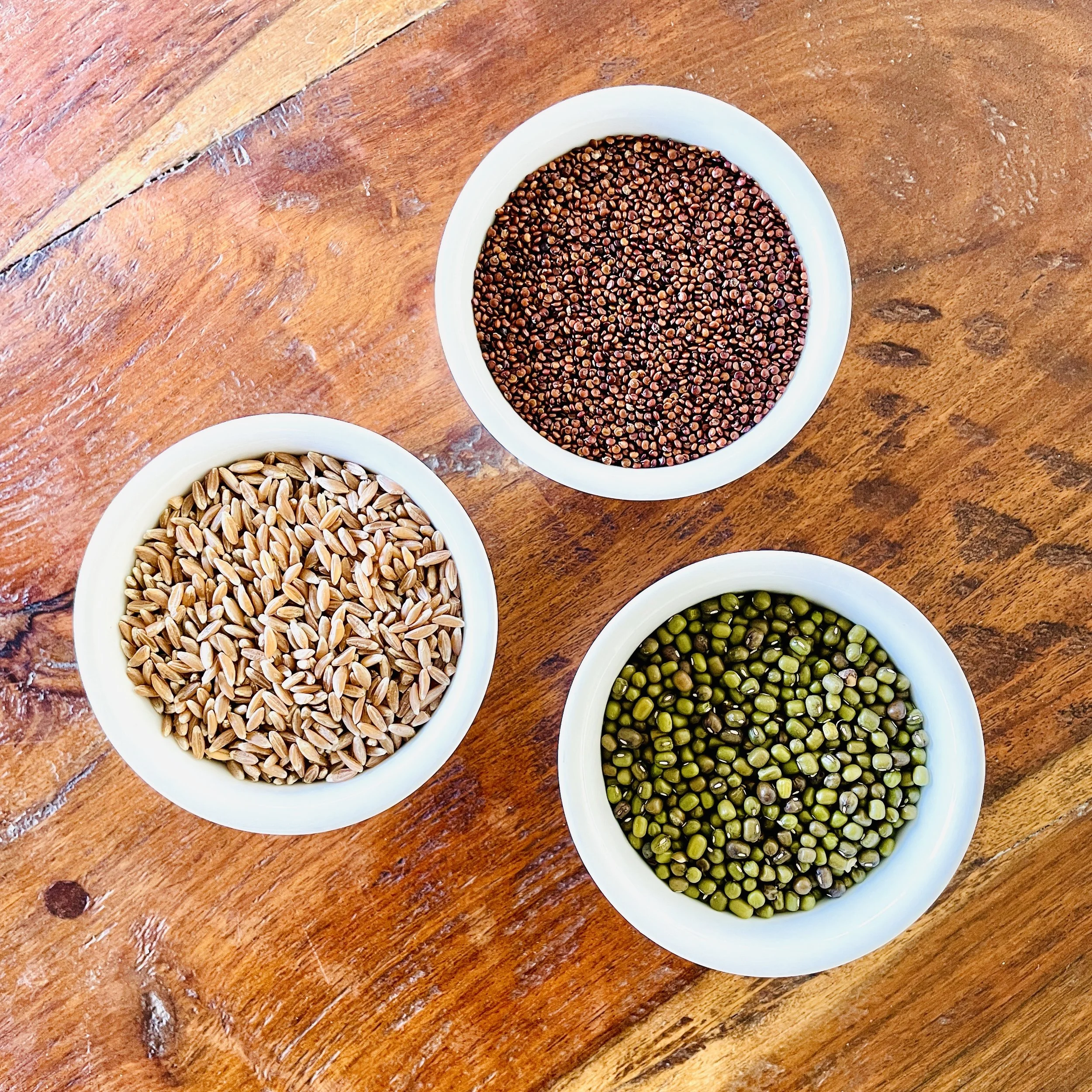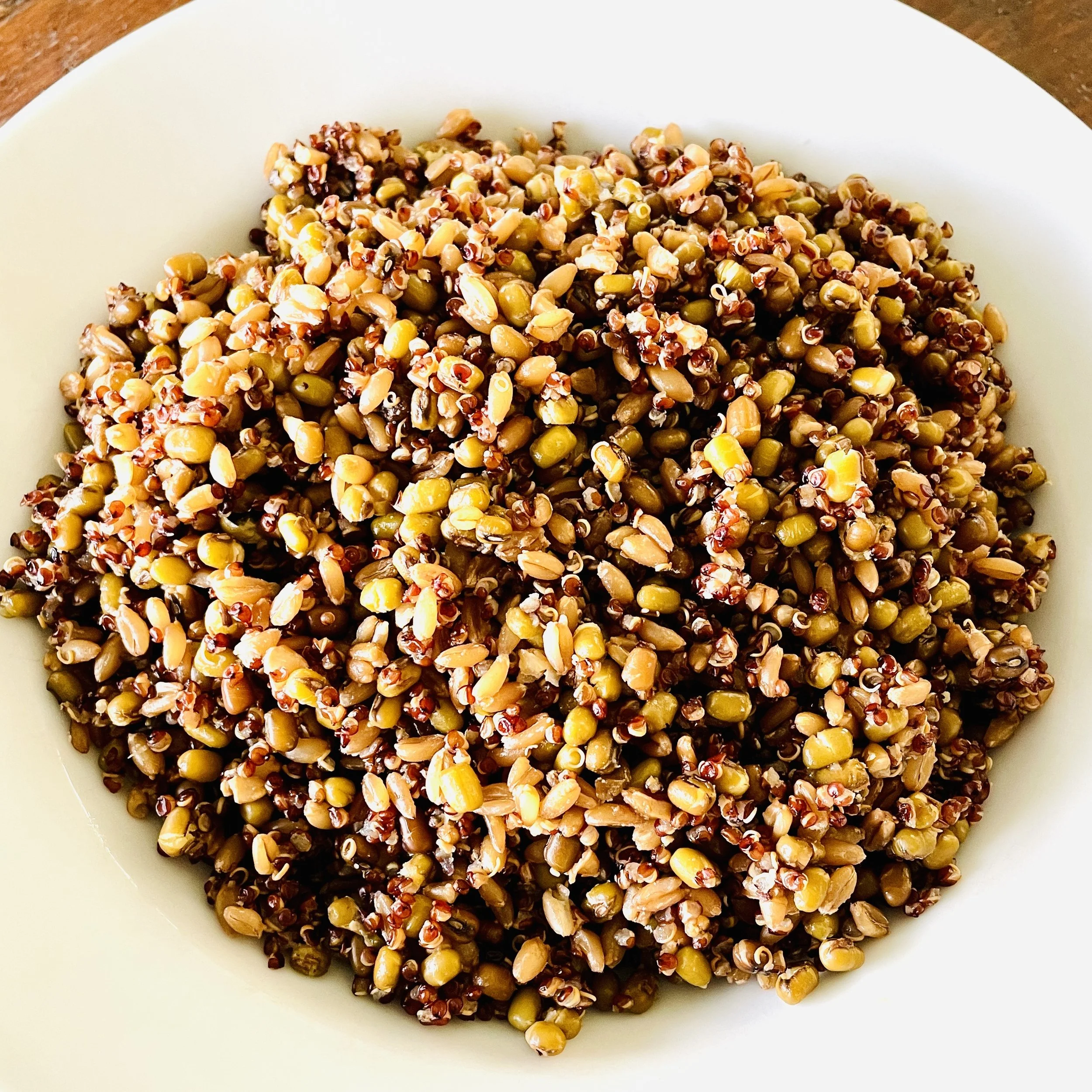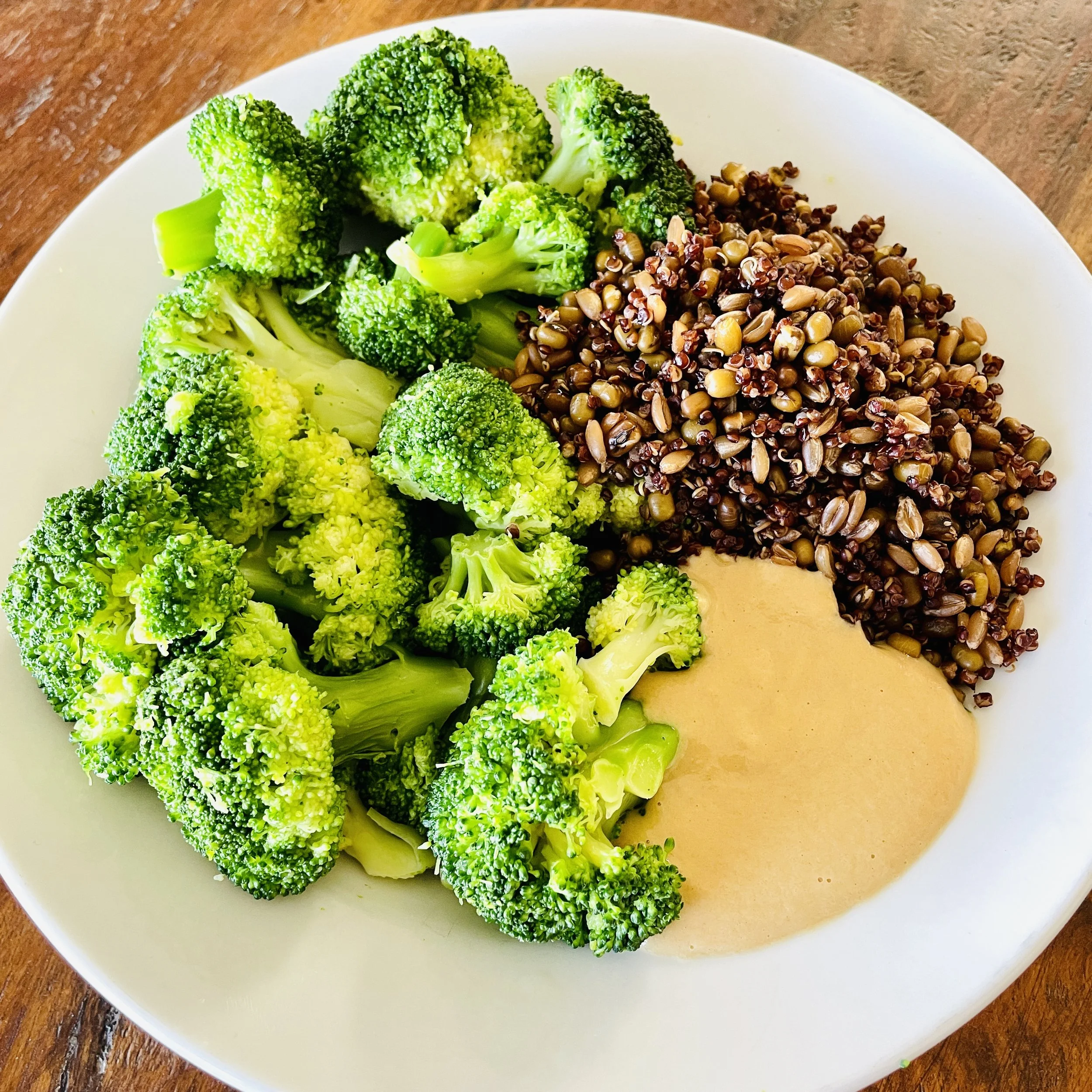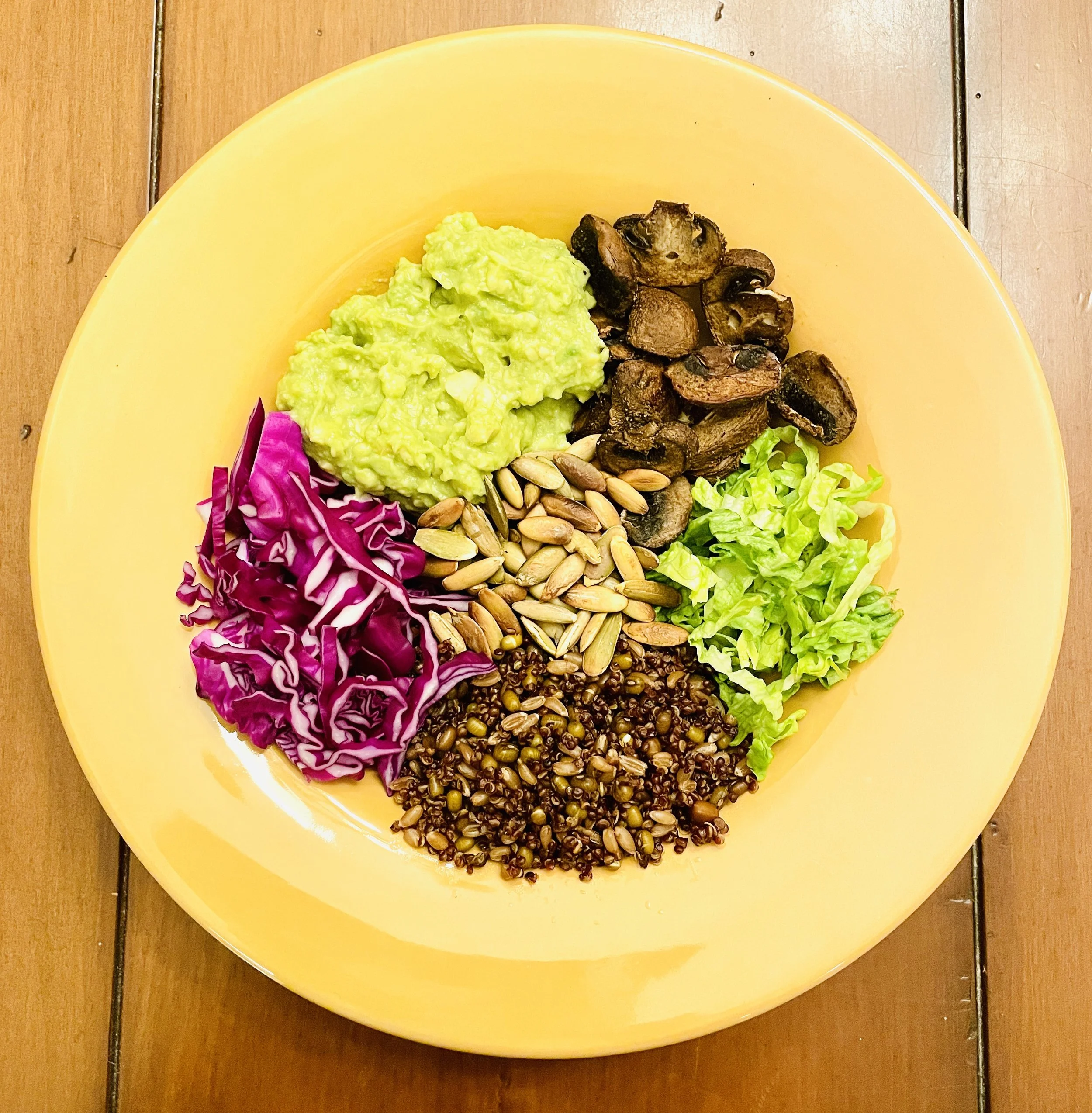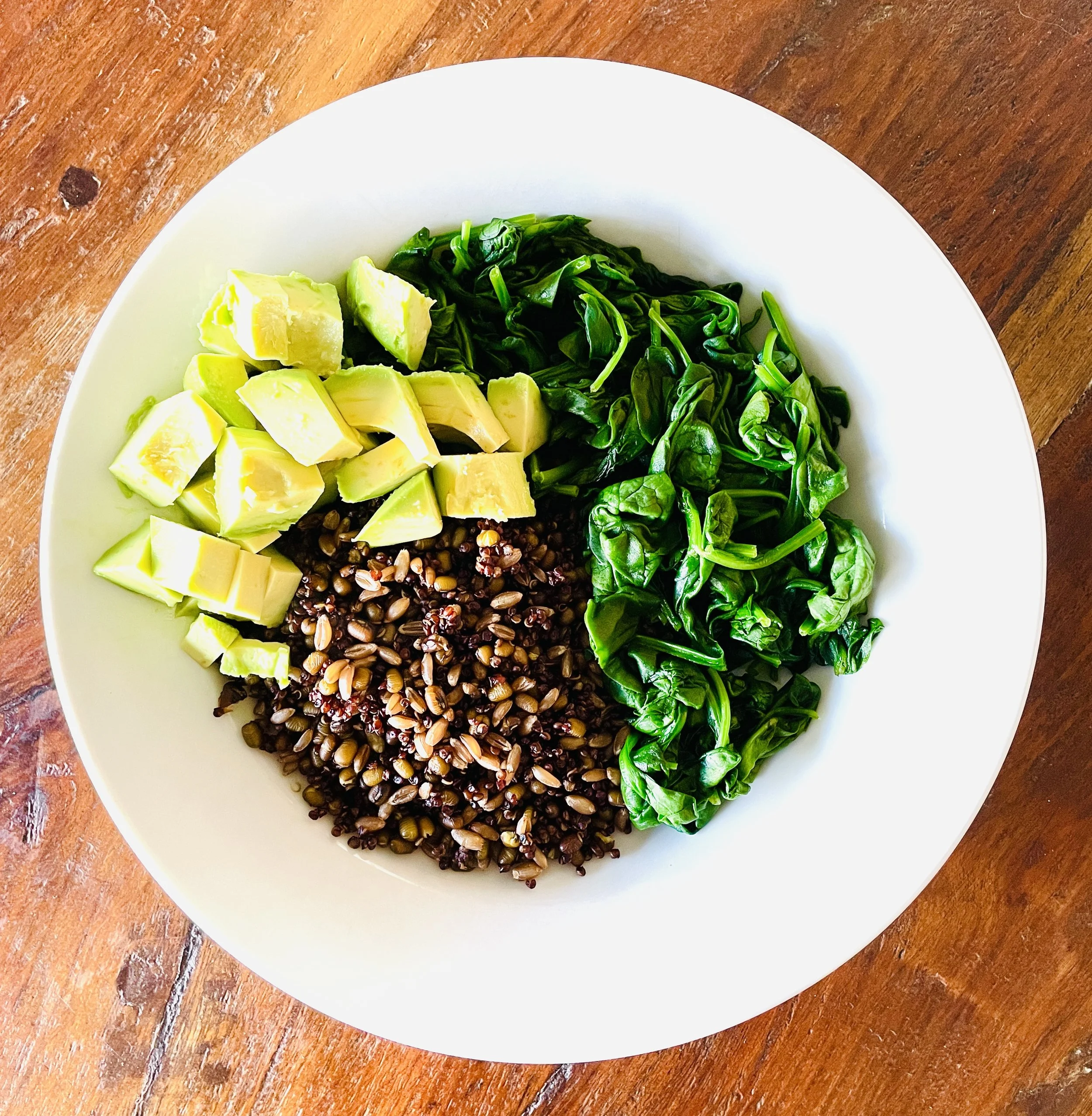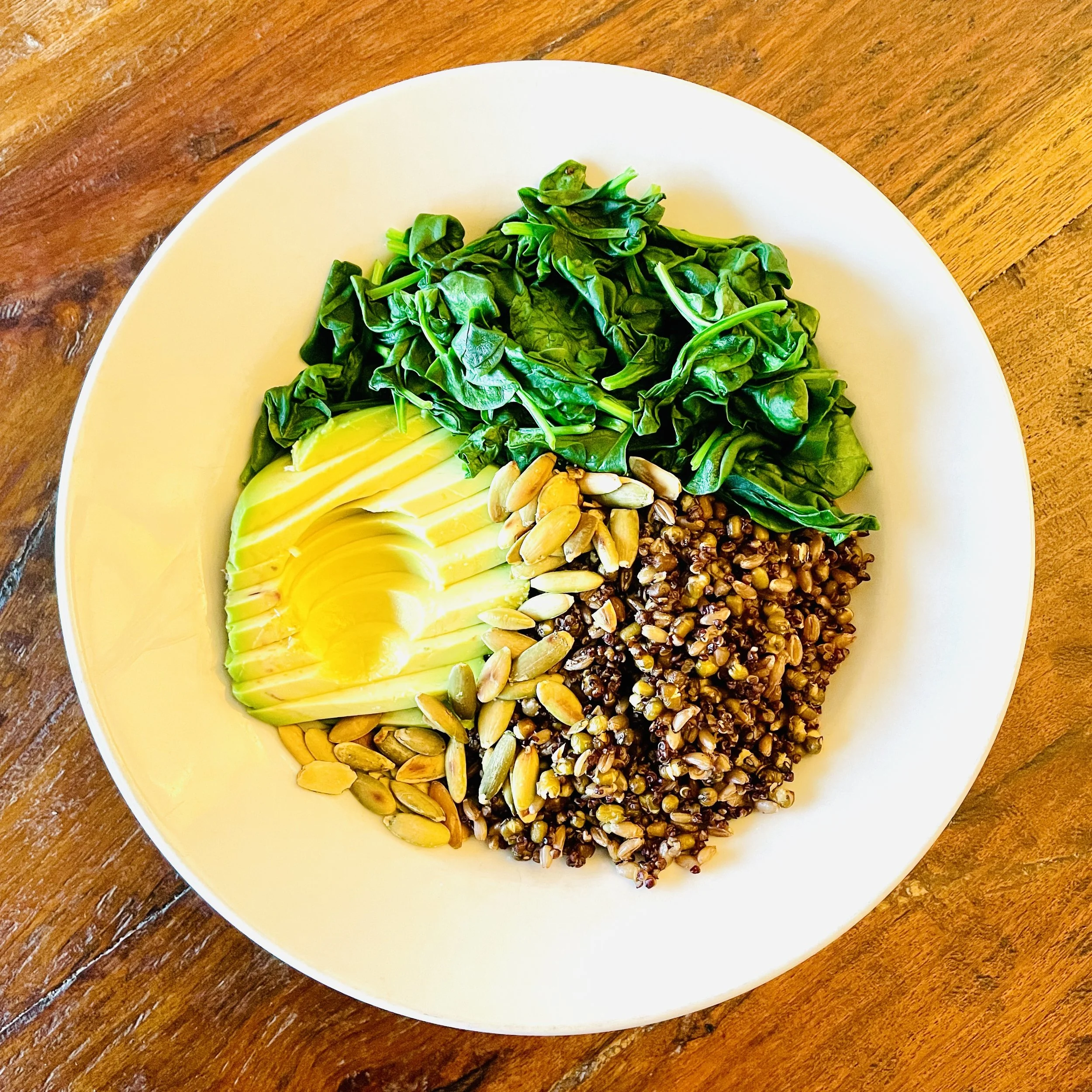Up Your Grain Game
No matter if you are an omnivore or a fully plant-based eater,
here is why we should all be eating whole grains daily:
Whole grains help to protect our brains from cognitive loss and dementia. Higher consumption of whole grain foods is strongly associated with a lower risk of all-cause dementia and Alzheimer’s Disease. The MIND diet for optimal brain health recommends at least 3 half-cup servings of whole grains daily.
www.thewell-nourishedbrain.com/blog/the-mind-diet
www.pubmed.ncbi.nlm.nih.gov/36382854/Whole grains are cardio-protective. Regular consumption of whole grains is associated with lowered risk of cardiovascular disease, improved blood cholesterol levels, and decreased likelihood of stroke and myocardial infarction.
www.ncbi.nlm.nih.gov/pmc/articles/PMC4908315/
www.pubmed.ncbi.nlm.nih.gov/35681238/Whole grains are protective against several common forms of cancer, especially hormonally-driven cancers including breast and prostate. They also help you to reach your 50 gram daily fiber goal to ward off colon cancer.
www.thewell-nourishedbrain.com/blog/have-you-counted-your-fiber-lately
www.pubmed.ncbi.nlm.nih.gov/10875601/Whole grains help to ensure a well-fed, robust, and diversely populated microbiome. Whole grains are a preferred food of our good gut bugs, providing resistant starch and fermentable carbohydrates that are crucial for microbiome health.
www.thewell-nourishedbrain.com/blog/plant-diversity-the-microbiome-and-health-outcomes
www.frontiersin.org/articles/10.3389/fnut.2022.919838/fullWhole grains are useful in diabetes prevention and management. Regular consumption of whole grains promotes better overall glucose control, reduces both fasting and post-prandial (after eating) glucose concentrations, and lowers insulin resistance.
www.pubmed.ncbi.nlm.nih.gov/32142510/
www.ncbi.nlm.nih.gov/pmc/articles/PMC9623515/
www.pubmed.ncbi.nlm.nih.gov/29305946/
To help increase our family’s consumption of whole grains and to up the variety of grains that we eat each week, I have started testing different grain combos to see which can be cooked simultaneously in either a rice or pressure cooker. This is my new favorite combination. It includes two powerhouse whole grains, red quinoa and farro, as well as the tiny but mighty mung bean. These all have compatible cook times, allowing them to be cooked together with ease.
To make a large quantity for use all week, I combine:
1 cup of red quinoa (or any other color quinoa you prefer)
1 cup of farro
1 cup of dry mung beans (I do not pre-soak these)
4 cups of water
In the rice cooker, I cook these on the white rice setting, which leaves them chewy but not mushy. In the pressure cooker, simply press the rice or mixed grains setting. If this quantity is too large for your needs, you can easily halve all the amounts.
This whole grain combination is great in a simple lunch bowl,
such as this one with broccoli and lemon-tahini dressing.
We love it as a base for burrito bowls.
It is terrific in place of rice with Indian dishes, such as with this spinach and tofu Palak sauce.
I enjoy it regularly in my simple and satisfying breakfasts,
which usually include leafy greens and plant fat from avocados and seeds.
This combination of red quinoa, farro, and mung beans is packed with protein, fiber, vitamins, minerals, and polyphenols. When comparing this with white or even brown rice, this combination is far superior in terms of nutritional density, fiber content, glucose modulation, and satiety.
A combined cup of cooked farro, quinoa, and mung beans has 8.9 grams of fiber, 9.5 grams of protein, and 200 calories.
White rice, by comparison, has only a half a gram of fiber per cooked cup, 4.3 grams of protein, and 205 calories.
Even a whole grain like brown rice has only 3 grams of fiber and 5.5 grams of protein per cooked cup. Plus, it has an increased calorie count of 250 calories.
Given this, instead of always reaching for rice with your meals, why not cook up a batch of mixed whole grains? These will leave you feeling full for longer, provide more fiber and protein, and improve both your immediate and longterm health.
I encourage you to up your grain game
by adding whole grains to your diet daily,
both for your brain and physical health.
Prepping combinations of whole grains in advance is an easy way to have the base for your meals already made and readily at hand. Cooking more than one whole grain at a time increases your weekly plant diversity for microbiome health and ensures a more complete nutritional profile. Additionally, sneaking legumes or seeds into your grains further augments the nutritional density of your meals.
Wishing you excellent health and happy eating!
🌱
If you are interested in more information on the health benefits of the mighty mung bean, please see: https://thewell-nourishedbrain.com/blog/mighty-mung-beans

